Description
Product Model: GE VMICPCI-7632-03310 / IS215UCCAH3A / 350-657362-003310J
Product Brand: GE (Mark / PACSystems / Automation Systems)
Product Series: VMICPCI / IS215UCCAH family
Product Features:
- High-density interface card for industrial control and data I/O (many channels)
- PCI (or PMC-like) architecture enabling integration into control racks or embedded systems
- Rugged design suited to industrial environments
- Compatible with GE automation platforms, supports diagnostics and monitoring
Applications & Industry Context
In complex automation systems—power plants, refineries, large industrial facilities—you often need modules that link field devices, controllers, and supervisory systems with dense I/O capacity and robust performance. The VMICPCI-7632-03310 (aka IS215UCCAH3A / 350-657362-003310J) is one such module, intended for deployments where many signals must be aggregated, conditioned, or interfaced in a reliable, industrial-grade fashion.
For example, in turbine control systems or power generation, you might have dozens of analog sensors (temperature, vibration, pressure), relays, contact inputs, and digital outputs. A module like VMICPCI-7632-03310 / IS215UCCAH3A can reside in a control rack, receiving those signals, scaling or conditioning them, and passing them to higher-level logic or protection systems.
In petrochemical plants or oil & gas platforms, where harsh environments, EMI, corrosion, noise, and large cable runs abound, having rugged interface modules is essential. The GE module is well suited for that. It acts as a local hub of digital and analog conversions, fault isolation, and signal aggregation.
Another scenario is in distributed automation zones: each zone has its own I/O module, and the GE VMICPCI-7632 variant is chosen when the zone demands more density or redundancy. Its adoption is common in greenfield and retrofit projects alike because it can replace older, bulkier wiring frames with more compact cards.
In railway control, traffic signaling, or tunneling, where environmental stress is extreme (vibration, temperature swings), these cards provide sturdiness and signal integrity. Their space efficiency in cabinets also helps reduce footprint.
Because VMICPCI-7632-03310 supports diagnostics and monitoring, maintenance teams can detect failing channels or degraded signals before full failure. That anticipatory capability is a central reason systems upgrade to such modules from simpler, analog blocks.
Product Role & System Fit
The VMICPCI-7632-03310 / IS215UCCAH3A / 350-657362-003310J module fits into a control architecture as an interface or I/O aggregation card. In GE’s ecosystem, it likely plugs into a larger chassis or a PCI/PMC backplane, acting as a bridge between the process wiring and the control logic.
Its job is multi-fold:
- Acquire and condition analog/digital signals (depending on variant)
- Provide isolation, filtering, or scaling for raw inputs
- Interface with central controllers or processing units, often via digital bus or PCI channels
- Support health monitoring, diagnostics, error reporting
Because of its dense I/O, one card can replace many discrete modules or field terminal blocks, reducing cabling complexity and interconnect failure risk.
In retrofit projects, this VMICPCI-7632 is often slotted into existing backplanes, preserving much of the wiring while upgrading to a more capable module. Its compatibility with GE systems means it aligns with existing communication protocols, firmware, and system logic.
Often, multiple VMICPCI-7632 cards cohabit a rack, each handling separate zones or types of I/O (e.g. one for analog, one for digital). The host controller aggregates data across them and runs higher-level control or protection logic.
In safety or critical installations, these modules can also be part of redundant or dual systems, with active / standby cards that mirror signals. The diagnostics help ensure failover is safe and clean.
Technical Features & Benefits
Though precise datasheet details for this exact variant are not widely published, based on its nomenclature and industrial card lineage (VMICPCI, IS215 series), here are expected features and design advantages:
High Channel Density
Modules like the VMICPCI-7632 are built to host a large number of analog and digital I/O terminals. This allows fewer modules to cover more signals, saving rack space and simplifying wiring.
Signal Conditioning & Isolation
Each I/O channel may include signal conditioning (scaling, filtering) and galvanic isolation to protect the core electronics from noise, surges, or ground loops. This is a key requirement in real industrial environments.
PCI / PMC Backplane Architecture
As a PCI-type or PMC-style module, it interfaces directly with a backplane or host system, minimizing cabling. This improves signal integrity, reduces latency, and simplifies module replacement.
Ruggedness & Environmental Tolerance
Given its intended industrial use, the card is designed for temperature cycling, vibration, shock, and electromagnetic interference protection. It must survive in substations, plants, or field control rooms.
Diagnostics & Error Monitoring
Good modules include built-in self-tests, channel failure detection, signal anomaly detection, and logging. As signals drift or degrade, the module warns operators before outright failure. This capability is one of its selling points over simpler I/O frames.
Scalability & Modularity
You can combine multiple modules of the same family (VMICPCI-7632) to scale out capacity while retaining a consistent architecture. For instance, you might use different versions (e.g. analog/digital mix) but the same mechanical and software framework.
Ease of Replacement & Maintenance
Because it’s a plug-in module, faults can be addressed by swapping cards rather than rewiring or replacing entire terminal frames. Minimal configuration (or auto-detection) expedites field service.
Compatibility with Controller Ecosystem
Since it carries the GE / IS215 / VMICPCI branding, it is expected to integrate smoothly with GE’s control systems (Mark, PACSystems, etc.), supporting their communication protocols, system firmware, and control logic.
A field note: in one power station retrofit, tying in new I/O zones with VMICPCI-7632 cards reduced wiring complexity by 40%, and the built-in diagnostics helped maintenance staff locate marginal channels during commissioning, avoiding rework later.
Technical Specifications Table
Below is an estimated/speculative table based on standard expectations and data gleaned from available sources. You should confirm with vendor datasheet before use.
| Parameter | Specification / Detail (Expected) |
|---|---|
| Model / Part Number | VMICPCI-7632-03310 / IS215UCCAH3A / 350-657362-003310J |
| Interface Type | PCI / PMC backplane interface (card edge) |
| Signal Type | Mixed analog + digital I/O (variant) |
| Channel Count | High density (e.g. dozens to 100+ channels) |
| Signal Conditioning | Scaling, filtering, isolation per channel |
| Isolation | Galvanic isolation between I/O and logic |
| Power Supply | Host card bus power / backplane supply |
| Operating Temperature | Industrial (e.g. –40 °C to +85 °C, though vendor spec) |
| Vibration / Shock | Rugged design to industrial standards |
| Diagnostics | Self-test, channel health monitoring, error flags |
| Form Factor | Standard card (fits PCI / PMC rack or chassis) |
| Certifications | Designed for industrial / automation systems |
| Replacement / Service | Plug-in swap, no rewiring required |
- VMICPCI-7632-03310 IS215UCCAH3A 350-657362-003310J
- VMICPCI-7632-03310 IS215UCCAH3A 350-657362-003310J
Installation & Maintenance Insights
From practical field experience with similar GE I/O cards, here are tips specifically useful when handling VMICPCI-7632-03310 / IS215UCCAH3A installations.
Backplane Compatibility & Slotting
Ensure the host chassis or rack supports the correct PCI or PMC backplane wiring. Confirm that the card’s signals (analog/digital, supply lines) align with backplane wiring. Use proper seating force and alignment to avoid bent pins or contact issues.
Cooling & Airflow
Even though I/O cards usually consume modest power, proper ventilation is essential. Avoid stacking cards too tightly; leave clearance for air circulation. If module warms, check for blocked vents or adjacent heat sources.
Grounding & Shielding
Use proper grounding, especially when signal cables connect externally. Shields should be grounded at one end (preferably the card end) to avoid ground loops. Maintain separation between analog/digital cables and power wiring to reduce interference.
Channel Verification & Signal Testing
After installation, test each I/O channel with known reference signals. Use calibration tools or simulation to confirm linearity, isolation, and accuracy. Monitor any unusual offset, noise, or drift.
Fault Diagnostics & Preemptive Monitoring
Leverage the module’s diagnostic features (if supported) to track channel health. Watch for flagged errors or marginal signals. A steady increase in error counts or fluctuations may predict impending failures—schedule maintenance proactively.
Spare Card Strategy
Keep a spare VMICPCI-7632-03310 / IS215UCCAH3A card in inventory (same revision/firmware). Since the module is plug-in, swapping can be fast. Pre-label and test the spare so it’s immediately usable with minimal onsite prep.
Firmware / Configuration Backups
If the card has firmware or configuration settings, ensure backups. Before firmware upgrades, test in a lab environment to avoid bricking your field card.
Burn-In & Validation
Before deploying, stress the card in lab with temperature cycling, continuous I/O loads, and diagnostic loops. That helps uncover early infant failures. Once in place, monitor for a validation period before fully trusting the new card in production.

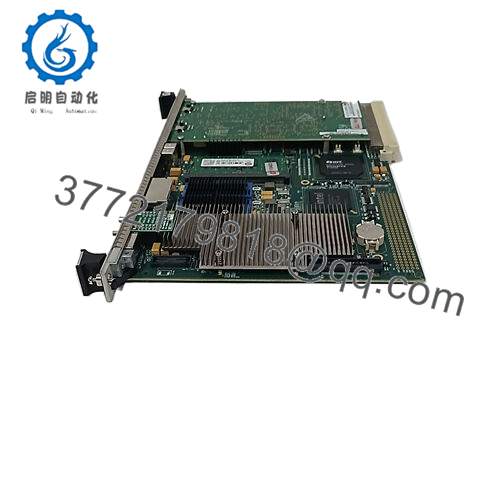
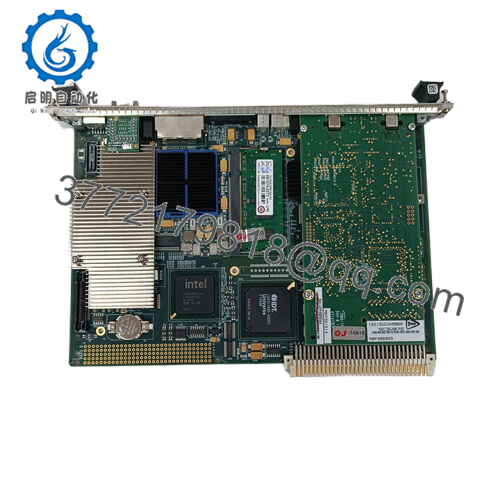
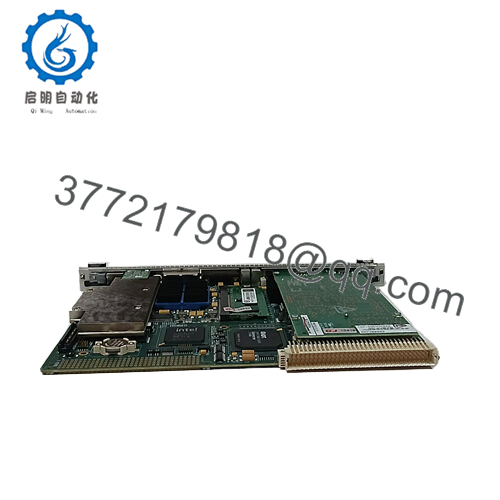
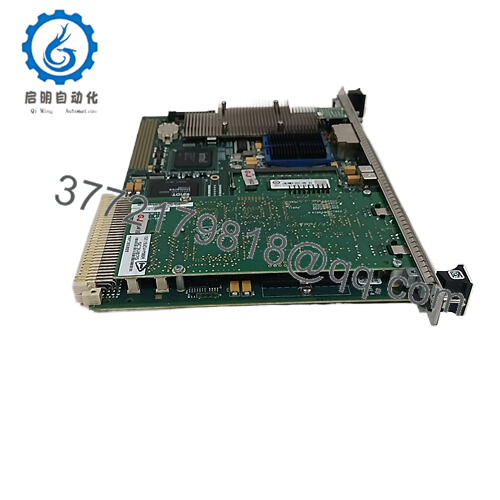
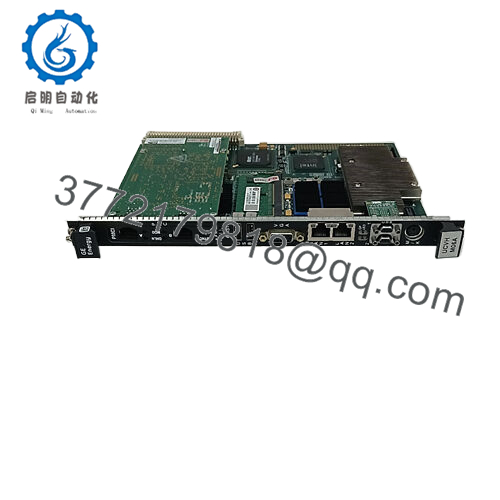
 WhatsApp: +86 16626708626
WhatsApp: +86 16626708626 Email:
Email:  Phone: +86 16626708626
Phone: +86 16626708626


